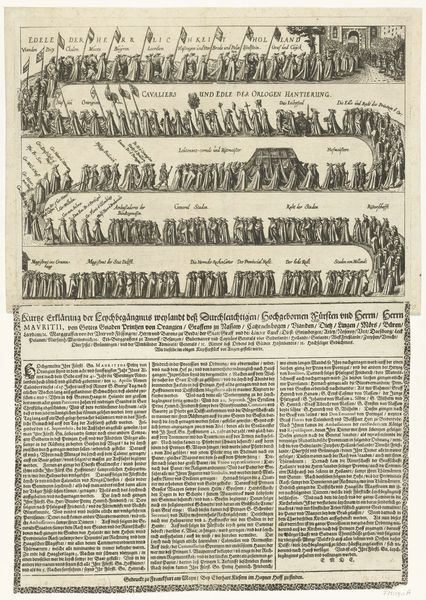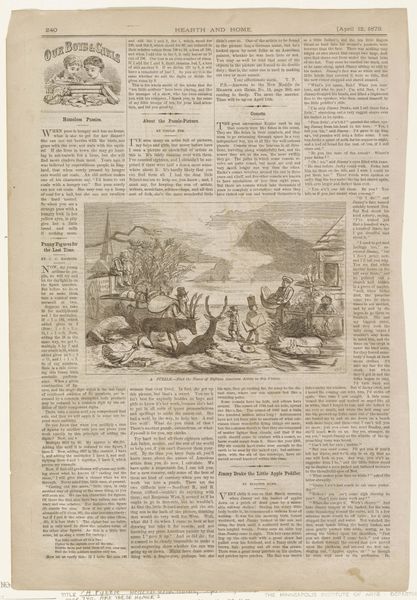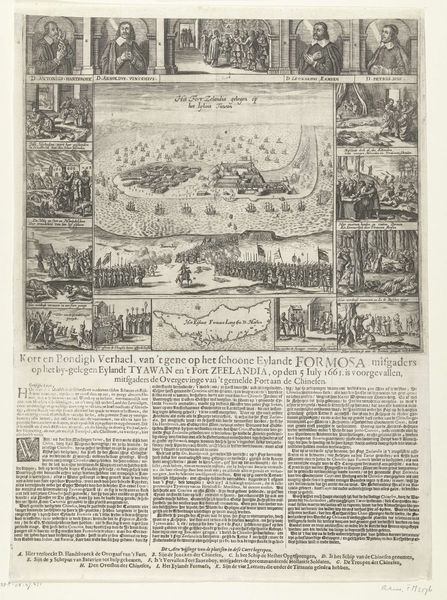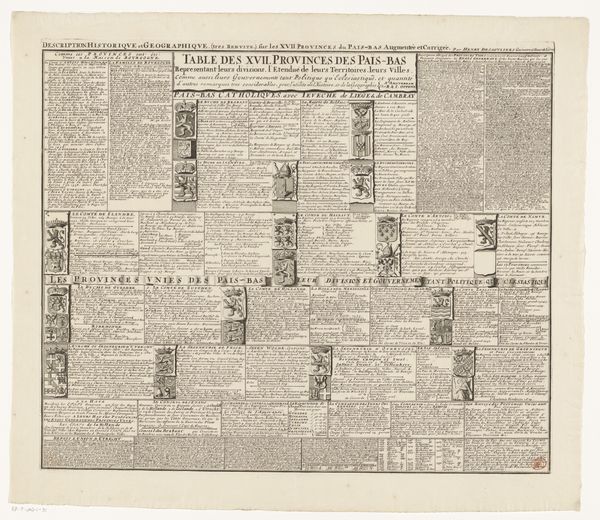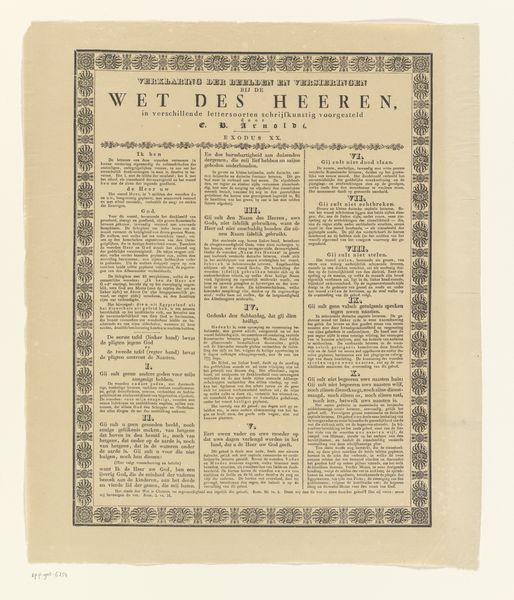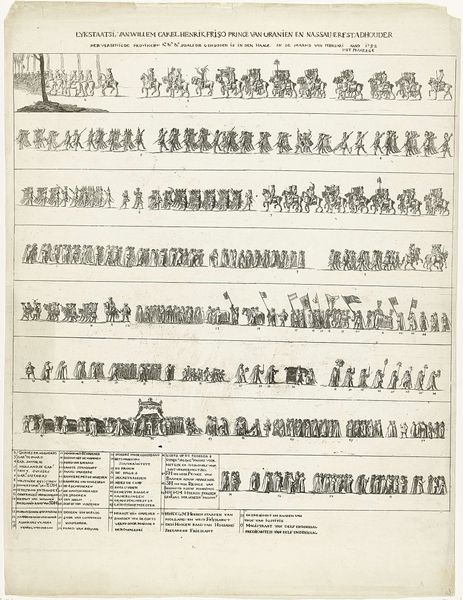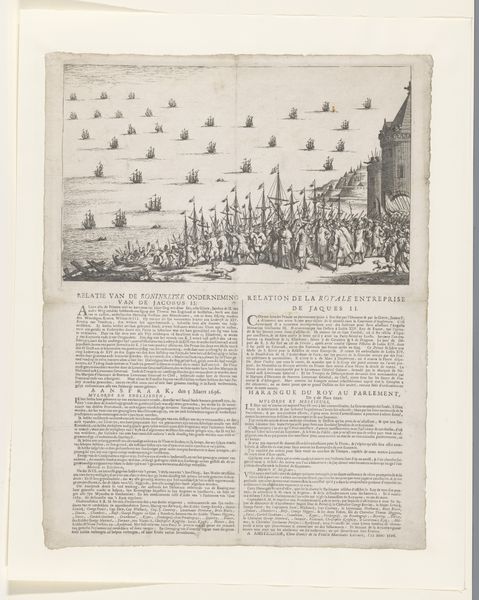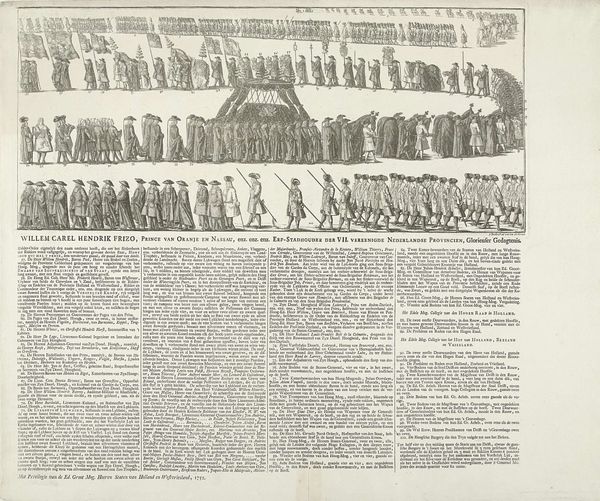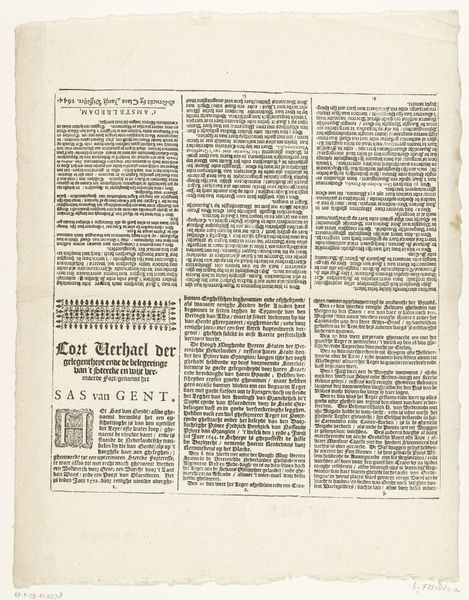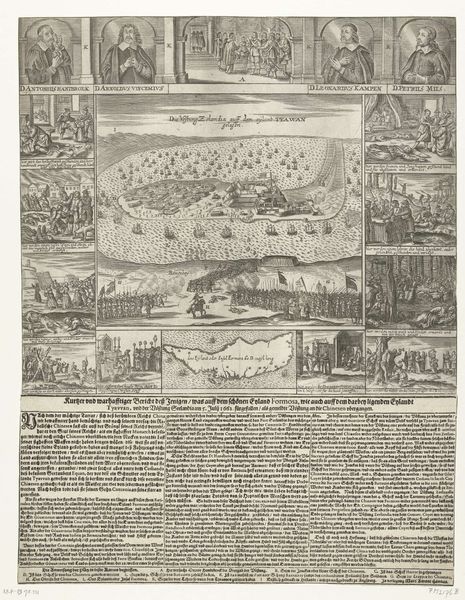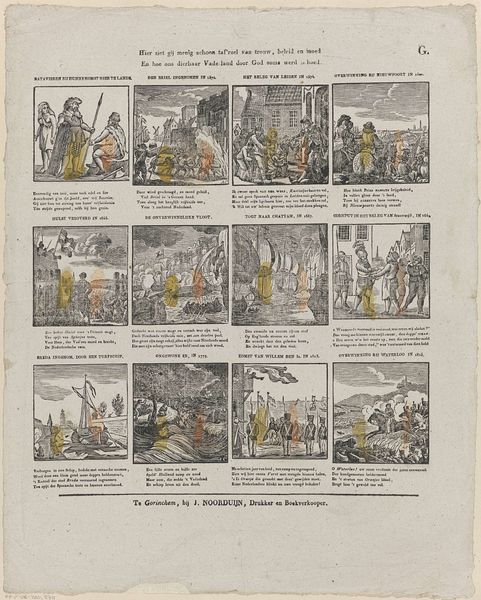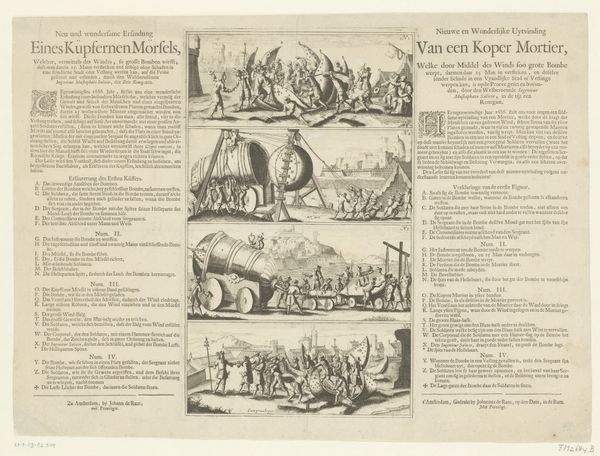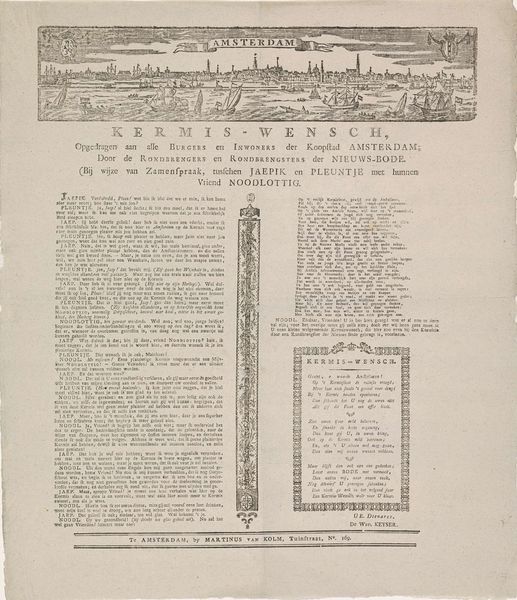
print, engraving
#
baroque
# print
#
line
#
cityscape
#
history-painting
#
engraving
Dimensions: height 270 mm, width 430 mm, height 435 mm, width 485 mm
Copyright: Rijks Museum: Open Domain
Curator: This detailed print, dating from between 1752 and 1754, is titled "Lijkstatie van Willem IV, 1752". The artist, Jacobus Buys, created this work depicting the funeral procession of William IV using line engraving. It's currently housed here at the Rijksmuseum. Editor: Immediately striking. The sheer number of figures meticulously rendered! It’s almost overwhelming. There's a rigid, almost ceremonial, quality conveyed through the ordered procession. What a remarkable feat of composition! Curator: Indeed. And what’s important to consider is how a print like this, made through the reproductive technology of engraving, disseminates power. The image functions to both mourn the passing of the Stadtholder but also reinforce the hierarchy through the display of civic order. Editor: That's a key point. Thinking about the formal arrangement: see how the procession unfolds across the picture plane. The artist cleverly uses linear perspective, even though it's somewhat flattened, to suggest depth and draw our eye to different segments of the cortège. The materiality is also striking, isn't it? The crispness of the engraved lines allowing for incredible detail. Curator: Absolutely. The lines denote more than form; they denote class, status, and labor. Engraving as a technique allowed for multiple impressions, making the image accessible. We must recognize the socioeconomic factors enabling widespread distribution. It’s not just about what is depicted but *how* it’s depicted and for whom. Editor: True. And if we zoom in – or could, in person! – one could spend hours dissecting the visual motifs. The banners, the clothing, even the way figures are posed – each carries symbolic weight related to power and the theater of mourning. Curator: Let’s not also forget that this detailed imagery provides valuable documentation about 18th-century funerary traditions, material culture, and even urban space in Amsterdam. Its function went beyond commemoration; it also offered a coded representation of Dutch society during that time. Editor: It seems to me the success lies in this interplay: that detailed, meticulous technique combined with symbolic meaning. The image is more than a record of an event; it embodies an entire social structure through purely visual means. Curator: It does provide insight into how the power of the elite extends beyond life, into the representation of death itself, mediated via this intricate printmaking process. Editor: Ultimately, it leaves me pondering the translation of pomp into pattern, where grief becomes a grand visual design.
Comments
No comments
Be the first to comment and join the conversation on the ultimate creative platform.
